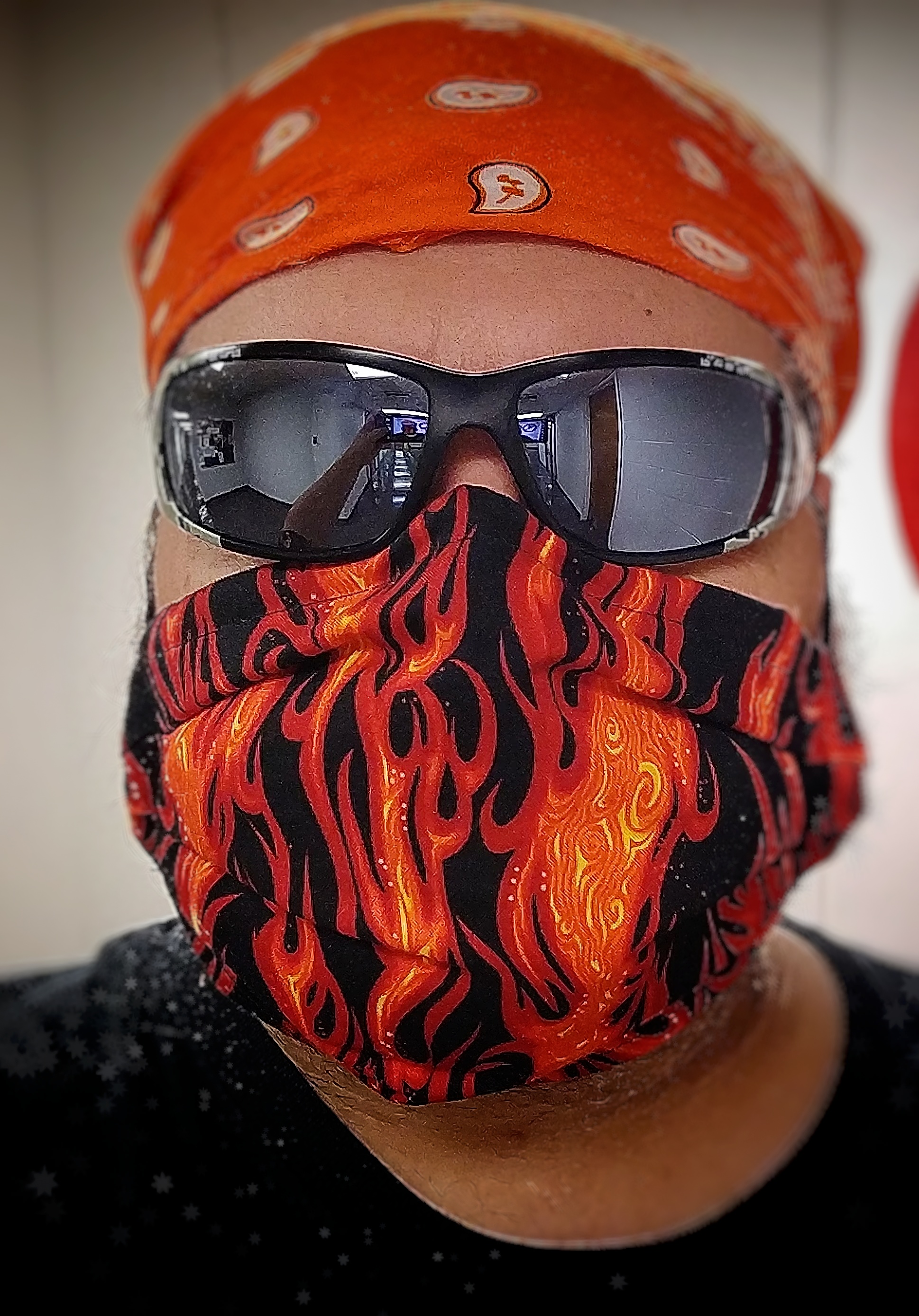I was wondering if someone has done something similar:
I want to detect if one of the kitchen burners have been running for a long time. Gas sensors won’t work because the fires are running.
I was thinking that a solution could be to have a wifi-enabled thermostat that sends the temperature to home assistant and if it is above > X for Y minutes, send an alarm/email/notification. The sensor could be hidden below the burners and connected via a cable to measure the temperature.
Does this make sense? Does anybody have some idea how to implement this (maybe using a ESP8266)?
Is there other alternative?
cc @homeassistant@lemmy.world @homeassistant@fosstodon.org @selfhost@lemmy.ml @selfhosted@lemmy.world @ironicbadger@techhub.social
Why temperature?
Assuming your burners are controlled by dials, slap a magnet on each of them and set up reed switches.
If you’re gonna disassemble the stove anyway, why not put the sensor on the knob and detect its position?
Not that I’ve done this, but an IR sensor would probably work well.
If it’s a gas burner then it produces CO2 as it operates, right? You could probably mount an ESP32 kit with a CO2 sensor (SGP30) and passive infrared receiver (AM312) over the range to monitor the CO2 level, and also whether anyone is standing at the stove. I didn’t check to see whether these modules were supported directly by esphome, but I’m sure the project either has a compatible module, or you could adapt something from the project to support these modules.
You could then program HA to alert if long term CO2 is elevated and no motion is detected at the range for some time.
Just an idea. I might try tinkering with something similar this weekend. I don’t have the gas sensor, but I’ve been looking for an excuse to order one
Sounds like a simple enough job using a DS18B20 sensor on a cable. They’re digital ambient temperature sensors with ±0.5°C accuracy, and can usually be picked up quite cheaply.
Aside from GND and 5V, they only use a single GPIO pin. As each one has s unique 64-bit address, you can wire more than one to the same GPIO pin without any issues. The only other thing you’ll need is a 4.7K resistor on the 3.3V to the GPIO.
Here in Australia, I got these from Amazon, and wired three up on a single GPIO pin for our lizard’s enclosure. I then wrote a quick and dirty Python script that publishes the temps into MQTT four times a minute, and load them as sensors in HA, to do things with. Admittedly, I’m running them on a Raspberry Pi, but that’s only because I’m also hosting a couple of webcams on it, to keep an eye on the lizard.
You could absolutely do this with an ESP board - esphome has you covered.
Edit: this tutorial will help you get started on how to wire it up.
@DeltaTangoLima@reddrefuge.com Thanks! Yes, I was looking into ESP8266 + DS18B20, thanks!
No worries - I’ve found them to be very effective. Just make sure you buy genuine ones. I bought a pack of (very) cheap ones and they were shit. Kept dropping after an hour or so, needing me to restart the service.
I edited my comment above with a link to a tutorial on how to wire them up on an ESP board. Have fun! Things like this are great weekend projects.
You can’t just post all that and not show the lizzy! I love pet-related automations
Lol - he’s been quite reclusive right now. Here’s some video of him eating, soon after we brought him home.
He’s nomming hard lol what kind of lizard is that?
Yeah - we’ve discovered he likes dog food! He’s an Eastern Blue Tongue skink. They’re native to my part of Australia (but still have to be purchased through licensed dealers).
Honestly, that should be pretty easy. Throw a thermometer that can connect to HA, put it like on the backsplash or somewhere nearby. Figure out the average temp near there and what it’s like when you’re cooking, then HA should be able to make it pretty easy to check and keep the previous temp(s).
No clue how to do it with an ESP but temp tracking is real common in HA and the automation setup should make that pretty simple to alarm on.
deleted by creator
deleted by creator
Not sure if I can offer any solution to this, but I would think through how you’ll deal with eliminating false positives like when you’re intentionally cooking something. You might include a PIR sensor to detect whether someone is actually standing at the stove and not send out warnings if movement is detected. Otherwise you’ll get a bunch of notifications about the burners whenever you’re cooking.
do you have a gas meter? surely it would be simpler to capture the operation of the meter either electronically if it’s a smart meter or optically if it has a moving part or dial?
Even if your heating is gas it should be possible to disaggregate that usage by measuring the consumption over a minute or so.
No solution for you, but it’s a great idea, and I’ll be watching this space.
Careful you don’t break gas code since you’re modifying the appliance. Insurance could deem non manufacture approved changes to the appliance and deny any and all claims and whatever governing body that oversees your gas codes could also deem that the appliance is not fit to be used if you ever have a gas tech inspect things.
That said, there is gas floweters that will tell you the gas flow and you can see if the range is on or not. Can’t remember the company that made them as it’s been a few years since I was in the trade and fielding these types of questions from home engineers etc…
Adding a sensor wouldn’t be considered a non manufacturer change. They would also need to prove it caused the fault before being able to deny the claim.
People also modify their appliances all the time, approved or not and it doesn’t matter since codes end at the shut off connection to the appliance.
Insurance doesn’t play by normal rules. Their job is to deny. That’s it. don’t give them justification to deny. If you attach any device to the appliance not approved by manufacture, you modified the device.
codes end at the shut off connection to the appliance.
No it doesn’t. Why does code deal with chimney, exhaust etc… That’s clearly after the shut off.
I agree they will still need to prove that it caused failure. I never said OP shouldn’t do this, just to be cautious about the realistic aspect that insurance can use this as firepower to deny and local codes could also prevent modifications. People don’t always think about it so it’s good information to be aware of.
And to deny a claim they must prove that it was a factor, there’s laws to prevent this from happening and recourse if they try to do that.
Different codes… explain how does a gas code apply to a chimney or exhaust please?
For your edit, can you provide an example of this happening? It gets perpetuated, but it doesn’t seem to be based of any evidence or facts.
CAN/CSA-B149.1:20
Go talk to my governing body that encompasses all components of HVAC into …HVAC…and ask them why exhaust from the gas is their responsibility.
Gas does not just mean gas supply. It also incorporates combustion, and exhaust, strapping, spacing of straps, how level the machine must be, types of materials used, how alterations to equipment must be handled and about 40 other things at a minimum.
As for the edit, I’m not digging through old documents to give you proof that insurance doesn’t pay without costly fights when you modify things without approval from manufacture or governing bodies.
That’s a CSA and only applicable if code has adopted it, which isn’t universally across the board either. The gas codes will pull what they need, the plumbing code will pull what they need… you’re attributing multiple trades into 1 while specifically only refering to 1 code they are bound by. You didn’t mention anything g else other than “gas code”. Now you’re talking about plumbing and exhaust.
I did talk to them, they said the guy online is full of shit and knows just enough to make a fool of themselves since they make standards for agencies to adopt what they need out of for their codes.
And you realize you are bound by those codes and standards if you’re a gas fitter doing paid work, yeah? A homeowner installing a gas appliance doesn’t need to, the code ends at the gas connection to the appliance.
You made the claims onus is on you, but I’ll do you a favour. The old documents don’t exist, that’s a lie, and even if they did, shits changed. And for posterity, what are they called, I’ll look them up if you won’t. I doubt you I’ll do this though since again they don’t exist.
Theres not some magical list that says what insurance of modifications that insurance will and will not cover, that’s addressed by them having to prove it caused the issue.
deleted by creator





